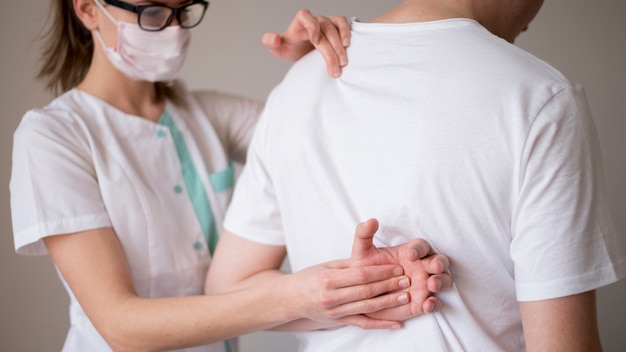Breast self-examinations are a vital way to catch breast cancer early. By regularly checking your own breasts, you can become familiar with how they normally look and feel, making it easier to spot any unusual changes.
The Purpose of Self-Examinations
By doing self-examinations regularly, you get to know what your breasts usually feel like, so you can quickly notice any changes or irregularities. The most common sign to watch for is a lump, which typically isn鈥檛 painful but can be felt or even seen. You should also keep an eye on your nipples for any changes, like becoming retracted, sticking out more, or leaking fluid. Watch for any skin changes, especially if they only affect one breast. These regular checks help you stay on top of any new hardenings or nodules that might appear.
Understanding Breast Cancer
Breast cancer is the most common cancer among women. It happens when some breast cells grow uncontrollably, forming a tumor in the mammary gland. These tumors can be benign, like fibroadenomas or cysts, or malignant (cancerous). Malignant tumors are dangerous because they can spread to nearby tissues or other parts of the body. Early detection is often possible with regular mammograms and check-ups based on your age and personal history. Treatment options, including surgery, chemotherapy, radiation, hormone, and biological therapies, depend on how advanced the cancer is and its specific characteristics.
When to Perform Self-Examinations
From the age of 20, you should check your breasts once a month, ideally a week after your period ends, since breasts can change with your cycle. Knowing your body helps you tell the difference between normal changes and potential problems. If you are pregnant or in menopause, the timing isn鈥檛 as critical, but you should still watch for changes in skin, nipple discharge, or shifts in the shape of the breast, and see a doctor if you notice anything unusual.
How to Conduct a Self-Examination
A self-examination has two parts: looking and feeling.
Observation: In front of a mirror, check for irregularities in shape, changes in skin color, cracked nipples, skin ulcerations, or dimples. Do this with your torso straight, shoulders relaxed, and arms at your sides, then with your arms raised, and again with your hands in front of your head while contracting your chest muscles.
Palpation: Use three joined fingertips to feel your breast in small, circular motions, covering all areas of the breast. Feel for any hardening or nodules by pressing gradually deeper.
What to Look Out For
Look for changes in the shape and size of your breasts, thickening or lumps in the breast or armpit, any discharge from the nipples, wrinkles or dimples on the skin, and any unusual sensations. Also, note any changes in the appearance of the nipple, skin rashes, unexplained pain, or inflammations. While self-exams are not a substitute for professional exams or tests like mammograms and ultrasounds, they are key in catching potential problems early. If you find any of these symptoms, see a doctor right away.







